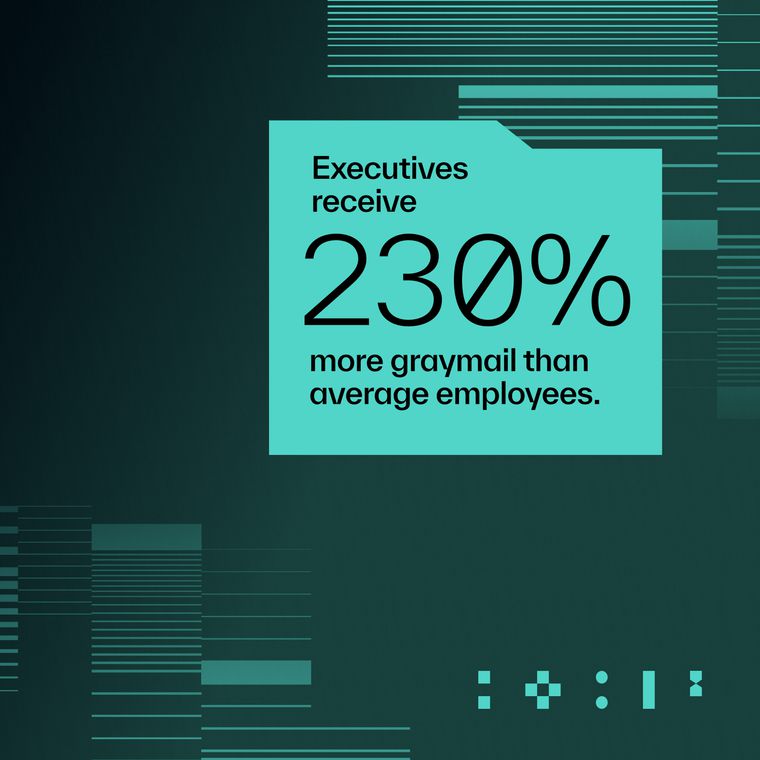The Comprehensive Guide to Proactive Threat Hunting
Build a scalable threat-hunting program in 30 days. Reduce dwell time, strengthen defenses, and prove security ROI with proven frameworks and AI-driven tools.
July 10, 2025
Proactive threat hunting slashes the window between compromise and containment, preserving both revenue and reputation. Attackers can linger for weeks before alarms ring, yet organizations that fund structured hunting programs shrink that gap dramatically.
Recent data shows that when insider risk budgets doubled from 8.2% to 16.5% of overall cybersecurity spending in 2024.
If a user clicks a phishing link, such as on a spoofed Bank invoice or replies to a compromised email address, you need more than "what to do after a phishing attack" checklists. You need a hunting program that surfaces hidden footholds and validates alerts at scale. This guide shows you how to set up and scale such a program, providing actionable insights. Read on to know more.
Core Components of a Scalable Threat-Hunting Program
Effective threat hunting requires a coordinated investment across five strategic pillars—people, processes, technology, metrics, and continuous improvement—with dedicated funding that aligns with business risk priorities.
Here’s what the implementation includes:
People and Budget: Secure skilled hunters, data engineers, and analysts with ring-fenced funding. Organizations now allocate double-digit percentages of security budgets to proactive functions, with insider risk spending jumping from 8.2% to 16.5% annually.
Process Framework: Use proven models like Sqrrl, TaHiTI, and PEAK to structure repeatable workflows. Map hunts to MITRE ATT&CK through hypothesis, investigation, pattern discovery, and evidence evaluation cycles.
Technology Integration: Deploy unified data lakes feeding SIEM, SOAR, and analytics platforms. Prioritize API integration over feature lists to enable complex queries across EDR, network, cloud, and identity data.
Measurable Outcomes: Track median dwell time reduction, quarterly hunt completion rates, and validated incident dollar impact. Translate technical wins into board-level KPIs.
Continuous Improvement: Feed discoveries into detection engineering, tabletop exercises, and budget forecasts to build security reputation and organizational resilience.
Coordinated investment across these five pillars creates proactive security capabilities that reduce risk while demonstrating measurable business value. That said, let’s understand what does it take to build and empower the threat-hunting team.
Building and Empowering the Threat-Hunting Team
Building a sustainable hunting capability requires a lean, clearly defined team with the right mix of skills, metrics, and growth paths. For this, you need to start with four essential roles.
A strategic lead sets the charter and reports outcomes to executives.
A senior hunter designs hypotheses and turns telemetry into detections.
A junior hunter handles day-to-day queries and documentation while learning the craft.
A data engineer guarantees reliable log flows and normalizes them for analysis. When these roles overlap in smaller organizations, assign primary and secondary responsibilities so nothing falls through the cracks.
The job descriptions should map directly to the competencies outlined for a modern threat hunter and the tiered duties of SOC analysts.
Essential Skills and Competencies
Threat hunting requires a combination of technical, analytical, and soft skills, along with strategic talent development through mentorship, training, and clear career progression, to address critical staffing shortages.
Here’s what you need to consider:
Required Competencies: Effective hunters need three skill sets working together. Technical abilities include network traffic analysis, endpoint forensics, and scripting for data pivots. Analytical skills involve creating MITRE ATT&CK-based hypotheses and recognizing behavioral patterns. Soft skills like curiosity, persistence, and clear communication are equally critical for collaboration with purple teams.
Building Your Team: Addressing Talent Shortages by Developing Internal Capabilities alongside Hiring. Pair junior analysts with senior hunters in rotating assignments, provide hands-on lab training, and reimburse certifications. Use red-versus-blue exercises to build adversarial thinking skills and reinforce continuous learning.
When Staffing Gaps Persist: Remember, managed services can handle routine hunts while your core team focuses on high-value scenarios. Evaluate outsourcing based on asset criticality, data residency requirements, and detection integration speed.
Successful programs retain talent through clear growth paths and meaningful career progression, with security manager roles highlighting specific hunt metrics and advancement opportunities within the threat hunting function.
Measuring and Scaling Threat Hunting Performance
Effective threat hunting programs require rigorous performance measurement through concrete metrics, regular reporting, and strategic expansion to create self-sustaining capabilities that attract top talent and enhance detection capabilities.
Here are the steps to follow:
Track What Matters: Measure your threat hunting program's effectiveness through concrete metrics. Monitor hunts completed against your schedule, new threat indicators your team contributes to detection systems, how quickly you detect and contain threats, and the financial impact of incidents prevented or costs avoided.
Show Progress Regularly: Create monthly scorecards that demonstrate progress to executives while showing hunters the real impact of their work. These regular updates build program credibility and keep team motivation high.
Expand Strategically: As your results improve, grow your program systematically. Start by adding new data sources to your hunts, then expand to cover additional threat types. Review your team's capacity every quarter to ensure you're scaling at a sustainable pace.
Build a Self-Sustaining Program: When you combine clear job roles, documented career development paths, and results-focused metrics, you create a program that naturally attracts skilled professionals and continuously improves your organization's threat detection capabilities.
Consistent measurement, transparent reporting, and strategic scaling create a reinforcing cycle that demonstrates value to executives while building a high-performing threat hunting capability that strengthens over time.
Choosing the Right Stack
Successful threat hunting requires three key components to work together: comprehensive data collection, multiple detection methods, and intelligent automation—all connected through integrated platforms.
The essential components are:
Complete Data Collection: Gather security data from everywhere attackers can strike—computers and devices, network traffic, cloud services, email systems, and user login activities. Put all this data in one place so your team can easily connect the dots during investigations.
Multiple Detection Methods: Use three different approaches to catch threats—signature matching (finds known bad stuff), behavior monitoring (spots unusual activities), and machine learning (discovers hidden patterns). Each method catches different types of attacks, so using all three gives you the best coverage.
Smart Automation: Let AI handle the routine work like organizing evidence, connecting related events, and flagging suspicious activities. This frees up your security team to focus on the complex investigations that need human expertise.
Connected Systems: Choose tools that work well together and share information automatically. This prevents gaps in coverage and reduces the time your team spends switching between different security tools.
The goal is to build a system where you collect data once but can use it everywhere, keeping your security team focused on hunting threats instead of managing technology.
Amplify Hunts with AI at Scale
AI amplifies the effectiveness of threat hunting by automating routine tasks and predicting attack patterns, while integrated platforms eliminate tool sprawl and create a unified security operation.
AI helps your security team work faster and smarter. It learns normal user behavior and business patterns, then flags unusual activities that basic rules would miss. AI can also predict where attackers might strike next, letting you hunt for threats before they become breaches.
However, attackers are also using AI to create more convincing phishing emails and scams that are harder to spot. This makes AI-powered defense even more important.
AI handles time-consuming tasks automatically, such as organizing evidence, connecting related events, and preparing investigation packages. Work that used to take hours now happens in seconds, giving your team more time for complex investigations. As your analysts review AI findings and provide feedback, the system becomes more effective at identifying genuine threats while reducing false alarms.
Connecting Your Security Tools
Having too many separate security tools creates blind spots and wastes money. Instead, choose platforms that work together and share information automatically. Look for systems that can add new capabilities without duplicating data storage.
Make sure each tool you keep provides unique value—either special data or analysis capabilities you can't get elsewhere. Connect threat intelligence feeds directly into your hunting workflows so new threat information automatically updates your searches.
The best setup works like this: collect security data once, then use it across all your tools. This keeps your team focused on hunting threats instead of juggling multiple systems.
AI-powered automation and integrated platforms transform threat hunting from a resource-intensive manual process into a scalable, efficient operation that adapts to evolving threats while maximizing your team's impact.
Embedding Threat Hunting into SOC and Incident Response
Effective threat hunting requires seamless integration with SOC operations and incident response, facilitated by clear roles, daily coordination, structured handoffs, and continuous improvement processes.
Define Clear Roles: Establish accountability with a simple responsibility matrix. Threat hunters create investigation theories, analyze data across multiple sources, and confirm malicious activity. SOC leaders make risk decisions and approve containment actions, while SOC analysts enrich alerts and provide investigative context. Threat intelligence staff map discovered activities to known attack methods, and incident responders take validated findings to quarantine assets and lead efforts to eradicate the threat.
Daily Coordination: Conduct brief daily meetings among hunters, analysts, and responders to discuss active investigations, newly identified threats, and ongoing response actions. This regular communication prevents duplicate work and ensures important findings get handled quickly before attackers can advance their operations.
Structured Handoffs: When hunters find credible threats, they create detailed alerts for the SOC team that include attack method mapping, affected systems, recommended actions, and severity levels. SOC analysts verify these findings against live data, then incident responders execute containment procedures following established playbooks. Document each transition so future teams can trace decisions and refine detection rules.
Test and Improve: Conduct regular exercises where red teams simulate the attacks that hunters have discovered, while blue teams test their detection capabilities in real-time. Use exercise results to update security tools and improve response procedures, turning lessons learned into measurable control improvements.
Document Everything: Maintain a searchable database of all hunting activities—investigation theories, data sources used, steps taken, and results. This knowledge base accelerates new team member training, supports compliance audits, and provides leadership with empirical evidence of security program progress.
Integrating threat hunting with SOC and incident response through defined roles, regular communication, and structured processes transforms investigative work into swift, repeatable defense that reduces attack impact and demonstrates clear business value.
Continuous Improvement
Threat hunting programs lose effectiveness without regular evaluation and updates. New attack methods emerge, detection techniques evolve, and team capabilities change. Without systematic review cycles, programs become stale and miss emerging threats.
Here are the steps to follow:
Every 90 days, bring together hunters, SOC leaders, and incident responders to analyze the previous quarter's performance. Start by reviewing core performance metrics like how quickly threats were detected, how many investigations were completed, and what security gaps were discovered. Map your findings to known attack methods to identify blind spots in your coverage.
During these reviews, document which investigation approaches produced useful results and eliminate those that didn't work. Use successful discoveries to update your security tools and response procedures. Assess your program's maturity level from basic ad hoc investigations to fully automated threat detection, and assign specific owners to advance capabilities before the next review cycle.
This regular feedback process ensures your threat hunting program stays current with evolving threats while continuously improving its effectiveness and demonstrating measurable progress to leadership.
Quarterly program reviews create a structured improvement cycle that keeps threat hunting programs effective, current, and aligned with emerging security challenges while advancing organizational security maturity.
Strategic Threat Hunting Delivers Measurable Security ROI
Proactive threat hunting grounded in clear hypotheses, disciplined processes, and measurable outcomes shrinks attacker dwell time and protects your most valuable assets. Executive alignment, purpose-built telemetry, and a metrics-driven feedback loop create a self-reinforcing program that finds and removes threats before they become breaches. Staffing a curious, well-trained team and arming it with AI-enhanced analytics multiplies both speed and precision.
Abnormal extends that advantage. Its behavioral AI engine continuously studies communication patterns across email, collaboration tools, and cloud accounts, surfacing subtle anomalies that signature or rule-based systems miss. By delivering high-fidelity leads instead of noisy alerts, Abnormal accelerates every phase of your hunt lifecycle—from hypothesis formation to rapid containment.
Ready to cut through alert fatigue and prove security ROI? Schedule a demo with Abnormal today.
Related Posts
Get the Latest Email Security Insights
Subscribe to our newsletter to receive updates on the latest attacks and new trends in the email threat landscape.


